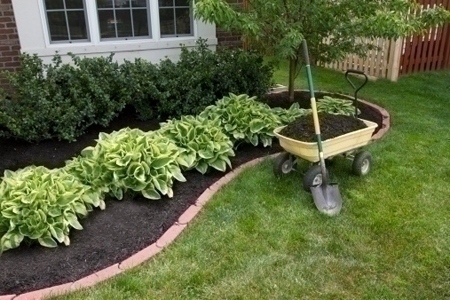 Your landscape is very much like your home’s interior décor.
Your landscape is very much like your home’s interior décor.
It grows old, sometimes tattered and torn, and needs updating from time to time. Sometimes, plantings need to be completely torn out and totally replaced. Sometimes, old porches, patios and decks just don’t work any longer.
Landscape design classes typically teach that a landscape lasts for 10-15 years before it needs at least a partial redo. Sometimes, it’s best to just start over from scratch and get the look you’ve always wanted and never achieved because there was never enough advance planning and an overall plan.
Landscape designers agree.
“When I started my business 21 years ago, there was a housing boom in Williamsburg, Va., and the bulk of my business was landscapes for new construction,” says Peggy Krapf of Heart’s Ease Landscape & Garden Design, www.HeartsEaseLandscape.com, and a certified designer through the Virginia Society of Landscape Designers, www.vsld.org.
“As time passed it has now become primarily renovating old, existing landscapes.”
Most landscapes need renovation for one of the following reasons, according to Krapf:
- Poor initial design, which becomes more obvious as years progress (wrong plants in wrong places).
- Bad workmanship and poorly chosen hardscaping/materials that don’t stand the test of time.
- Old age of plants and bad or improper regular pruning through the years.
- New owners who have different landscape taste or style.
“I tell my clients that if it is time to renovate the inside of the house, it is probably time to renovate the outside,” she says.
“Once a landscape reaches the 12-15 year point many plants have outgrown their spaces or reached the end of their lifespans. Trees should live many years and should be in places where they have room to grow to their mature sizes. Nothing is sadder than beautiful trees, just reaching their maturity, that need to be removed because they were not planted in the right place to begin with.”
Renovating a landscape can be tricky, continues Krapf. Sometimes it is necessary to remove all the plants and begin fresh. Other times some plants can be left in place and pruned or reshaped and mixed with new plants.
“When mixing new with old, I try to purchase larger-sized new plants so there is less contrast between new and old,” she says.
Some shrubs can be rejuvenated: cut back hard to remove old growth and stimulate new, younger growth. Many deciduous plants and evergreens such as Japanese hollies, boxwoods, and Chinese hollies can be cut back hard in early spring, and will grow back and be serviceable for many more years. Overgrown evergreens can sometimes be “limbed up” into tree forms to give them new life. Valuable plants can be transplanted to other locations where they have more room to continue to grow.
“I have several clients with beautiful landscapes that are 15 or more years old,” she says.
“Regular maintenance and pruning make all the difference.










